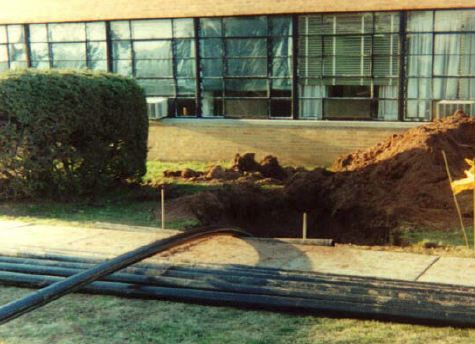Horizontal SVE – Cleansing Technologies to Meet Diverse Demands
It is common to find many layers of soil contaminated in areas of mining and chemical treatments, whether it is in urban industrial areas or in remote landscapes. And to treat the soil and groundwater contamination, many technologies have been developed and are in place. As much as the technicalities of these processes might differ – from injection of microbes that digest contaminants to the vacuum extraction of vapor in the soil – they all share one common condition i.e.) to come in contact with the contaminated media. Most of the pollution and contamination of soil and groundwater that happens in and around typical industrial and commercial sites is the result of releases of volatile organic compounds (VOCs) such as benzene, toluene, xylene, jet fuel, fuel additives, and ethylbenzene, which are common constituents of gasoline or other petroleum products. The most effective method to treat this kind of contamination is by deploying Horizontal Soil Vapor Extraction or (Horizontal SVE).
The greater the ability of the contaminant to volatilize the better will be the results. Once these pollutants enter the soil as a liquid, most of the liquid gets adsorbed onto the surface of the soil particles and it distributes itself above the water table in the Vadose zone. A small portion of the volatile compound evaporates, or volatilizes, leaving spaces for the water vapor between the soil particles to fill and solidify. On removing some of this soil vapor, the pollutant too evaporates to maintain the equilibrium between liquid and gaseous phases of the compound. The process of horizontal soil vapor extraction makes best use of this behavior of the soil and its pollutants to remove contaminants from within the vadose zone.
The horizontal soil vapor extraction well works on the principle of vacuuming the contaminated soil and contaminant vapor through a perforated or slotted well screen placed within the Vadose zone. The suction created by the vacuum draws clean air from the surrounding soil to fill the low-pressure region and helps in volatizing more free product that have been sticking to the soil. This process is repeated and continues till only a residue of the contaminant remains, which might not be removable due to its tight bond to the soil. The horizontal soil vapor extraction method often employs horizontal wells for its cleaning up, particularly in sites that are eco-sensitive, populated and at sites located beneath structures such as gas stations, chemical plants and refineries.

There are two chief hurdles that the engineers would consider during the design and installation of horizontal SVE – water table fluctuation and leakage into the atmosphere. Fluctuating water tables could reduce system efficiency and potentially damage the vacuum system by drawing in water during operation. As there is seasonal rise and fall of water tables, it is important to be aware of the current depth of water and the highest elevation that the water table is likely to reach. A dual-phase extraction system would be the best option for a SVE installation in a site with a fluctuating water table.
For effective soil vapor extraction, the soil structure and stratification are to be ascertained in advance as it could affect how and where soil vapors will be drawn within the soil matrix at the time of extraction. The rate of air and vapor movement through the soil is directly affected by the density or the permeability of the soil. Higher permeability of the soil aids faster movement of particles and vapors that can be extracted. The layering of the soil and the fractures in it, which constitute its structural quality, can also result in indefinite flow behavior which can result in ineffective or extended remedial times. A faulty set up that is positioned so that the induced air flow occurs outside the area of contamination, it might in leakage.
Directional Technologies has been successfully performing Horizontal SVE since 1984! The companies’ experience in the oil field, environmental remediation industry and utility industry allows us to complete projects that were previously considered unfeasible. Give us a call to discuss your next AS system project.
For additional information, contact:
Kathy Sequino
203-294-9200